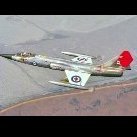-
Posts
651 -
Joined
-
Last visited
Reputation Activity
-
 rvchima got a reaction from Haliburton in Robert E Lee by rvchima - FINISHED - Amati - scale 1:150 - Mississippi River Steamboat 1866 - 1876
rvchima got a reaction from Haliburton in Robert E Lee by rvchima - FINISHED - Amati - scale 1:150 - Mississippi River Steamboat 1866 - 1876
Third Deck Planking
The technique of gluing planks to a paper backing is working extremely well. The 2 mm walnut strips supplied with the kit are about 20" long, and I am gluing up 10" segments of 2, 3, 4, and 5 strips, plus segments of 1+2+2+1 mm strips that fit the doors and windows. I put a stop block on my cutting board to cut pieces to the height of the cabin. I saw with paper side down so the wood doesn't tear when the saw cuts through.
Another big advantage is that when I mess up and glue something crooked, it cuts off easily through the paper backing and just requires a little sanding to remove the paper.
I planked the forward cabin, sanded and oiled it in two days. Then painted the window interiors and added the windows and doors in a couple more hours.
The flat planks on the walnut cabins look SO much better than the chamfered planks on the painted cabins. The next deck is back to white, and I will totally forget the chamfering.
I planked the aft cabin in 3 hours.
-
 rvchima got a reaction from hof00 in Sanson by hof00 - FINISHED - Artesania Latina - 1/50 - 19th century tug
rvchima got a reaction from hof00 in Sanson by hof00 - FINISHED - Artesania Latina - 1/50 - 19th century tug
Congratulations Harry, she looks great! I like the lights too.
-
 rvchima got a reaction from VitusBering in Sanson by hof00 - FINISHED - Artesania Latina - 1/50 - 19th century tug
rvchima got a reaction from VitusBering in Sanson by hof00 - FINISHED - Artesania Latina - 1/50 - 19th century tug
Congratulations Harry, she looks great! I like the lights too.
-
 rvchima reacted to Boerscht in Hello from lake constance, Germany
rvchima reacted to Boerscht in Hello from lake constance, Germany
Hello everyone at MSW,
i am a 28yo from the south of germany, based at lake constance. Normally I go sailing a lot on the lake with my Korsar Class boat and Tornado Katamaran but things changed since I cought LongCovid months ago and can‘t be active at all anymore. Life changed so it is time for new hobbies.
In my youth i was freaking out about building Revell models. I did hundreds of them including Bismarck, Cutty Sark, Alexander von Humboldt, aircraft carriers, planes and helicopters. I remembered this in search of new hobbies which don’t need that much body activity.
From Revell I wanted to do the next step and go into wooden ship buildings.
I really like craftmanship and am an engineer myself. I worked a lot on my wooden Korsar Class sailboat.
In research of models i stumbled across MSW and here I am now.
The first Kit is already finished. Started with the Mini Mamoli - Goletta Elisabeth witch turned out pretty good.
Next up is the Amati Endeavour 1:60. Already did the basics and planking the first hull starts soon.
Besides I Just ordered the Krick Optimist 1:10 as a little side project.
Looking forward to share the builds with you and get some tips from the pros.
Greetings,
Boerscht
mini Mamoli - Goletta Elisabeth
-
 rvchima got a reaction from yvesvidal in Robert E Lee by rvchima - FINISHED - Amati - scale 1:150 - Mississippi River Steamboat 1866 - 1876
rvchima got a reaction from yvesvidal in Robert E Lee by rvchima - FINISHED - Amati - scale 1:150 - Mississippi River Steamboat 1866 - 1876
Third Deck Planking
The technique of gluing planks to a paper backing is working extremely well. The 2 mm walnut strips supplied with the kit are about 20" long, and I am gluing up 10" segments of 2, 3, 4, and 5 strips, plus segments of 1+2+2+1 mm strips that fit the doors and windows. I put a stop block on my cutting board to cut pieces to the height of the cabin. I saw with paper side down so the wood doesn't tear when the saw cuts through.
Another big advantage is that when I mess up and glue something crooked, it cuts off easily through the paper backing and just requires a little sanding to remove the paper.
I planked the forward cabin, sanded and oiled it in two days. Then painted the window interiors and added the windows and doors in a couple more hours.
The flat planks on the walnut cabins look SO much better than the chamfered planks on the painted cabins. The next deck is back to white, and I will totally forget the chamfering.
I planked the aft cabin in 3 hours.
-
 rvchima got a reaction from Cathead in Robert E Lee by rvchima - FINISHED - Amati - scale 1:150 - Mississippi River Steamboat 1866 - 1876
rvchima got a reaction from Cathead in Robert E Lee by rvchima - FINISHED - Amati - scale 1:150 - Mississippi River Steamboat 1866 - 1876
Third Deck Planking
The technique of gluing planks to a paper backing is working extremely well. The 2 mm walnut strips supplied with the kit are about 20" long, and I am gluing up 10" segments of 2, 3, 4, and 5 strips, plus segments of 1+2+2+1 mm strips that fit the doors and windows. I put a stop block on my cutting board to cut pieces to the height of the cabin. I saw with paper side down so the wood doesn't tear when the saw cuts through.
Another big advantage is that when I mess up and glue something crooked, it cuts off easily through the paper backing and just requires a little sanding to remove the paper.
I planked the forward cabin, sanded and oiled it in two days. Then painted the window interiors and added the windows and doors in a couple more hours.
The flat planks on the walnut cabins look SO much better than the chamfered planks on the painted cabins. The next deck is back to white, and I will totally forget the chamfering.
I planked the aft cabin in 3 hours.
-
 rvchima got a reaction from schooner in Robert E Lee by rvchima - FINISHED - Amati - scale 1:150 - Mississippi River Steamboat 1866 - 1876
rvchima got a reaction from schooner in Robert E Lee by rvchima - FINISHED - Amati - scale 1:150 - Mississippi River Steamboat 1866 - 1876
Grand Staircase
The staircase is cast metal. It needed a little sanding to flatten the top, but wasn't too bad otherwise. There is a support dowel between the deck and staircase landing, so I drilled through the center of the landing to make a tight fit for the dowel. The four bottom stairs are individual pieces of plywood that are glued up and angled to fit the slope of the fore deck. I used double sided tape to hold everything in place, used a little CA to glue the bottom stairs and dowel permanently, then removed the assembly for painting.
The columns and arch were built separately and glued to the staircase. The instructions called for lamps on the two columns. No lamps were included with the kit, so I made some with tiny gold beads on brass pins.
I really liked rodgerdodger's red carpet treatment, so I borrowed the idea. This is the first thing that passengers would see when boarding the ship, inviting them to go upstairs. Good thing, because the next thing they would see is the boiler room.
-
 rvchima got a reaction from Canute in Robert E Lee by rvchima - FINISHED - Amati - scale 1:150 - Mississippi River Steamboat 1866 - 1876
rvchima got a reaction from Canute in Robert E Lee by rvchima - FINISHED - Amati - scale 1:150 - Mississippi River Steamboat 1866 - 1876
Third Deck Planking
The technique of gluing planks to a paper backing is working extremely well. The 2 mm walnut strips supplied with the kit are about 20" long, and I am gluing up 10" segments of 2, 3, 4, and 5 strips, plus segments of 1+2+2+1 mm strips that fit the doors and windows. I put a stop block on my cutting board to cut pieces to the height of the cabin. I saw with paper side down so the wood doesn't tear when the saw cuts through.
Another big advantage is that when I mess up and glue something crooked, it cuts off easily through the paper backing and just requires a little sanding to remove the paper.
I planked the forward cabin, sanded and oiled it in two days. Then painted the window interiors and added the windows and doors in a couple more hours.
The flat planks on the walnut cabins look SO much better than the chamfered planks on the painted cabins. The next deck is back to white, and I will totally forget the chamfering.
I planked the aft cabin in 3 hours.
-
 rvchima got a reaction from schooner in Robert E Lee by rvchima - FINISHED - Amati - scale 1:150 - Mississippi River Steamboat 1866 - 1876
rvchima got a reaction from schooner in Robert E Lee by rvchima - FINISHED - Amati - scale 1:150 - Mississippi River Steamboat 1866 - 1876
Third Deck Planking
The technique of gluing planks to a paper backing is working extremely well. The 2 mm walnut strips supplied with the kit are about 20" long, and I am gluing up 10" segments of 2, 3, 4, and 5 strips, plus segments of 1+2+2+1 mm strips that fit the doors and windows. I put a stop block on my cutting board to cut pieces to the height of the cabin. I saw with paper side down so the wood doesn't tear when the saw cuts through.
Another big advantage is that when I mess up and glue something crooked, it cuts off easily through the paper backing and just requires a little sanding to remove the paper.
I planked the forward cabin, sanded and oiled it in two days. Then painted the window interiors and added the windows and doors in a couple more hours.
The flat planks on the walnut cabins look SO much better than the chamfered planks on the painted cabins. The next deck is back to white, and I will totally forget the chamfering.
I planked the aft cabin in 3 hours.
-
 rvchima got a reaction from hof00 in Sanson by hof00 - FINISHED - Artesania Latina - 1/50 - 19th century tug
rvchima got a reaction from hof00 in Sanson by hof00 - FINISHED - Artesania Latina - 1/50 - 19th century tug
Lots of nice details on the lifeboats!
-
 rvchima got a reaction from Snug Harbor Johnny in Robert E Lee by rvchima - FINISHED - Amati - scale 1:150 - Mississippi River Steamboat 1866 - 1876
rvchima got a reaction from Snug Harbor Johnny in Robert E Lee by rvchima - FINISHED - Amati - scale 1:150 - Mississippi River Steamboat 1866 - 1876
Third Deck Planking
The technique of gluing planks to a paper backing is working extremely well. The 2 mm walnut strips supplied with the kit are about 20" long, and I am gluing up 10" segments of 2, 3, 4, and 5 strips, plus segments of 1+2+2+1 mm strips that fit the doors and windows. I put a stop block on my cutting board to cut pieces to the height of the cabin. I saw with paper side down so the wood doesn't tear when the saw cuts through.
Another big advantage is that when I mess up and glue something crooked, it cuts off easily through the paper backing and just requires a little sanding to remove the paper.
I planked the forward cabin, sanded and oiled it in two days. Then painted the window interiors and added the windows and doors in a couple more hours.
The flat planks on the walnut cabins look SO much better than the chamfered planks on the painted cabins. The next deck is back to white, and I will totally forget the chamfering.
I planked the aft cabin in 3 hours.
-
 rvchima got a reaction from hof00 in Robert E Lee by rvchima - FINISHED - Amati - scale 1:150 - Mississippi River Steamboat 1866 - 1876
rvchima got a reaction from hof00 in Robert E Lee by rvchima - FINISHED - Amati - scale 1:150 - Mississippi River Steamboat 1866 - 1876
Third Deck Planking
The technique of gluing planks to a paper backing is working extremely well. The 2 mm walnut strips supplied with the kit are about 20" long, and I am gluing up 10" segments of 2, 3, 4, and 5 strips, plus segments of 1+2+2+1 mm strips that fit the doors and windows. I put a stop block on my cutting board to cut pieces to the height of the cabin. I saw with paper side down so the wood doesn't tear when the saw cuts through.
Another big advantage is that when I mess up and glue something crooked, it cuts off easily through the paper backing and just requires a little sanding to remove the paper.
I planked the forward cabin, sanded and oiled it in two days. Then painted the window interiors and added the windows and doors in a couple more hours.
The flat planks on the walnut cabins look SO much better than the chamfered planks on the painted cabins. The next deck is back to white, and I will totally forget the chamfering.
I planked the aft cabin in 3 hours.
-
 rvchima got a reaction from Altduck in Robert E Lee by rvchima - FINISHED - Amati - scale 1:150 - Mississippi River Steamboat 1866 - 1876
rvchima got a reaction from Altduck in Robert E Lee by rvchima - FINISHED - Amati - scale 1:150 - Mississippi River Steamboat 1866 - 1876
Third Deck Planking
The technique of gluing planks to a paper backing is working extremely well. The 2 mm walnut strips supplied with the kit are about 20" long, and I am gluing up 10" segments of 2, 3, 4, and 5 strips, plus segments of 1+2+2+1 mm strips that fit the doors and windows. I put a stop block on my cutting board to cut pieces to the height of the cabin. I saw with paper side down so the wood doesn't tear when the saw cuts through.
Another big advantage is that when I mess up and glue something crooked, it cuts off easily through the paper backing and just requires a little sanding to remove the paper.
I planked the forward cabin, sanded and oiled it in two days. Then painted the window interiors and added the windows and doors in a couple more hours.
The flat planks on the walnut cabins look SO much better than the chamfered planks on the painted cabins. The next deck is back to white, and I will totally forget the chamfering.
I planked the aft cabin in 3 hours.
-
 rvchima reacted to yvesvidal in HMS Bellona by yvesvidal - CAF Model - 1:48
rvchima reacted to yvesvidal in HMS Bellona by yvesvidal - CAF Model - 1:48
A few more information to describe the way the skid beams are built:
After placing carefully the beams, six holes are drilled in it. Then these holes are reported on the hull and drilled with 0.8 mm bit. Note the careful carving of the rails with a Dremel equipped with a disk.
The beam is finely sanded and its external surface is rounded. It is then "oiled" with Howard Feed and Wax, revealing the beautiful color of the sherry wood.
It is then glued (CA 7-10 seconds) and then pinned into place. The pins are cut and hammered down in the hull. At the end, a dab of Black Cannon acrylic paint achieves to give them the "old" look.
The steps are then installed:
Et voila, both sides have been completed:
I need to find a way to keep these ropes straight and dangling....
Yves
-
 rvchima reacted to ccoyle in Grumman F4F-4 Wildcat by ccoyle - FINISHED - WAK - 1/33 - CARD
rvchima reacted to ccoyle in Grumman F4F-4 Wildcat by ccoyle - FINISHED - WAK - 1/33 - CARD
I'll build another one and put it on an engine stand next to the finished bird. Ha ha -- not! 😂
-
 rvchima reacted to ccoyle in Grumman F4F-4 Wildcat by ccoyle - FINISHED - WAK - 1/33 - CARD
rvchima reacted to ccoyle in Grumman F4F-4 Wildcat by ccoyle - FINISHED - WAK - 1/33 - CARD
Last night I finished the cowling and mounted both it and the engine to the fuselage. When it comes to cowlings, card model designers have two options. By far the more common option is to make the cowling from a series of rings, like those seen here for my earlier F6F build:
The other and thankfully less common option is to design the cowling as what's called a "petal structure" in the hobby, i.e., the cowling is a single strip (or two strips in this case -- an inner one plus an outer one) from which a series of tapered darts is removed, creating a row of 'petals'. The petals are then rolled to bring their tips together, creating the rounded cowling.
I absolutely, positively despise petal structures. In the first place, they are an absolute nightmare to shape properly. I don't know how the Poles do it, but I'm far from mastering the technique. In addition, and for obvious reasons, a petal structure has a large number of seams -- sixteen in this instance. Lastly, it is very difficult, for me at least, to judge whether I have achieved the correct amount of 'roll'. The roll is largely determined by the petal shape -- you simply roll them until the edges come together -- but there's still a certain amount of leeway between getting it just right and almost right. Happily, the whole thing does not look as bad in real life as this unflattering close-up makes it appear.
Still to be added is the air scoop that sits atop the cowling. The dash-four had two additional scoops inside the cowling at roughly the four and eight o'clock positions, as you can see in this photo:
The kit makes no provision for the inside scoops, so I'll have to give some thought to whether to add them. Anyways, that's where we're at for now.
-
 rvchima reacted to ccoyle in Grumman F4F-4 Wildcat by ccoyle - FINISHED - WAK - 1/33 - CARD
rvchima reacted to ccoyle in Grumman F4F-4 Wildcat by ccoyle - FINISHED - WAK - 1/33 - CARD
All done! I'd tell you what all the extra added doohickeys are, but I don't know what they are myself -- I just followed the reference photo. As a matter of curiosity, there are, of course, multiple variants of the Twin Wasp. I didn't find any sources that could tell me which variant(s) was(were) used in the dash-four, so if you know, don't tell me now, cuz it's too late! 😅
-
 rvchima reacted to ccoyle in Grumman F4F-4 Wildcat by ccoyle - FINISHED - WAK - 1/33 - CARD
rvchima reacted to ccoyle in Grumman F4F-4 Wildcat by ccoyle - FINISHED - WAK - 1/33 - CARD
Now we're getting down to details that are difficult for a cellphone camera to capture. Cylinders #3 and #13 have hoses that connect to the distribution ring. In addition to these, I did a test run of the spark plug 'wires', which are simply black thread. The hoses and wires have couplings that I believe were probably brass on the original or some other brown-toned metal; these I have simulated with dark tan paint. Overall, I like the effect and think we're good to go for the remaining thirteen sets of wires.
BTW, the kit provided a template for making the distribution ring from wire, but since the original is rectangular in cross-section, not round, I chose to make one from scratch from scrap 'beer mat'. This was a good move, because it is infinitely easier to glue the thread ends to card rather than to metal.
-
 rvchima reacted to ccoyle in Grumman F4F-4 Wildcat by ccoyle - FINISHED - WAK - 1/33 - CARD
rvchima reacted to ccoyle in Grumman F4F-4 Wildcat by ccoyle - FINISHED - WAK - 1/33 - CARD
Have now added the second bank of cylinders and distribution ring.
-
 rvchima reacted to hof00 in Sanson by hof00 - FINISHED - Artesania Latina - 1/50 - 19th century tug
rvchima reacted to hof00 in Sanson by hof00 - FINISHED - Artesania Latina - 1/50 - 19th century tug
Hi All,
Bit of an update....
Mast and lighting complete (Not wi9thout issues and a re-build 🙂) Lifeboats complete Rigging complete (Lashings for Lifeboats the exception here Last six Port-Lights added All-over Satin Polyurethane
Stuff to do:
Lifeboat Lashings X4 each consists of 2 Double Blocks Ring-Bolts, Etc. Davit Mounting (I may need to lengthen the mounting shafts by two or three mm I can see if this is necessary after the Lifeboats are lashed down Hull Buffers/Bumpers Towing Rings (These are the slightly curved pieces that span the Rear Deck, they will be interesting 🙂 A/L supply a reasonably heavy Brass rectangular section strip for the two "Rings." I am still pondering how to accurately form these.
Anyway, almost there.
Cheers....HOF.
Photos:
-
 rvchima got a reaction from Canute in Robert E Lee by rvchima - FINISHED - Amati - scale 1:150 - Mississippi River Steamboat 1866 - 1876
rvchima got a reaction from Canute in Robert E Lee by rvchima - FINISHED - Amati - scale 1:150 - Mississippi River Steamboat 1866 - 1876
Grand Staircase
The staircase is cast metal. It needed a little sanding to flatten the top, but wasn't too bad otherwise. There is a support dowel between the deck and staircase landing, so I drilled through the center of the landing to make a tight fit for the dowel. The four bottom stairs are individual pieces of plywood that are glued up and angled to fit the slope of the fore deck. I used double sided tape to hold everything in place, used a little CA to glue the bottom stairs and dowel permanently, then removed the assembly for painting.
The columns and arch were built separately and glued to the staircase. The instructions called for lamps on the two columns. No lamps were included with the kit, so I made some with tiny gold beads on brass pins.
I really liked rodgerdodger's red carpet treatment, so I borrowed the idea. This is the first thing that passengers would see when boarding the ship, inviting them to go upstairs. Good thing, because the next thing they would see is the boiler room.
-
 rvchima got a reaction from yvesvidal in Robert E Lee by rvchima - FINISHED - Amati - scale 1:150 - Mississippi River Steamboat 1866 - 1876
rvchima got a reaction from yvesvidal in Robert E Lee by rvchima - FINISHED - Amati - scale 1:150 - Mississippi River Steamboat 1866 - 1876
Grand Staircase
The staircase is cast metal. It needed a little sanding to flatten the top, but wasn't too bad otherwise. There is a support dowel between the deck and staircase landing, so I drilled through the center of the landing to make a tight fit for the dowel. The four bottom stairs are individual pieces of plywood that are glued up and angled to fit the slope of the fore deck. I used double sided tape to hold everything in place, used a little CA to glue the bottom stairs and dowel permanently, then removed the assembly for painting.
The columns and arch were built separately and glued to the staircase. The instructions called for lamps on the two columns. No lamps were included with the kit, so I made some with tiny gold beads on brass pins.
I really liked rodgerdodger's red carpet treatment, so I borrowed the idea. This is the first thing that passengers would see when boarding the ship, inviting them to go upstairs. Good thing, because the next thing they would see is the boiler room.
-
 rvchima got a reaction from Swinging the lead in Robert E Lee by rvchima - FINISHED - Amati - scale 1:150 - Mississippi River Steamboat 1866 - 1876
rvchima got a reaction from Swinging the lead in Robert E Lee by rvchima - FINISHED - Amati - scale 1:150 - Mississippi River Steamboat 1866 - 1876
Grand Staircase
The staircase is cast metal. It needed a little sanding to flatten the top, but wasn't too bad otherwise. There is a support dowel between the deck and staircase landing, so I drilled through the center of the landing to make a tight fit for the dowel. The four bottom stairs are individual pieces of plywood that are glued up and angled to fit the slope of the fore deck. I used double sided tape to hold everything in place, used a little CA to glue the bottom stairs and dowel permanently, then removed the assembly for painting.
The columns and arch were built separately and glued to the staircase. The instructions called for lamps on the two columns. No lamps were included with the kit, so I made some with tiny gold beads on brass pins.
I really liked rodgerdodger's red carpet treatment, so I borrowed the idea. This is the first thing that passengers would see when boarding the ship, inviting them to go upstairs. Good thing, because the next thing they would see is the boiler room.
-
 rvchima got a reaction from hof00 in Robert E Lee by rvchima - FINISHED - Amati - scale 1:150 - Mississippi River Steamboat 1866 - 1876
rvchima got a reaction from hof00 in Robert E Lee by rvchima - FINISHED - Amati - scale 1:150 - Mississippi River Steamboat 1866 - 1876
Grand Staircase
The staircase is cast metal. It needed a little sanding to flatten the top, but wasn't too bad otherwise. There is a support dowel between the deck and staircase landing, so I drilled through the center of the landing to make a tight fit for the dowel. The four bottom stairs are individual pieces of plywood that are glued up and angled to fit the slope of the fore deck. I used double sided tape to hold everything in place, used a little CA to glue the bottom stairs and dowel permanently, then removed the assembly for painting.
The columns and arch were built separately and glued to the staircase. The instructions called for lamps on the two columns. No lamps were included with the kit, so I made some with tiny gold beads on brass pins.
I really liked rodgerdodger's red carpet treatment, so I borrowed the idea. This is the first thing that passengers would see when boarding the ship, inviting them to go upstairs. Good thing, because the next thing they would see is the boiler room.
-
 rvchima got a reaction from Snug Harbor Johnny in Robert E Lee by rvchima - FINISHED - Amati - scale 1:150 - Mississippi River Steamboat 1866 - 1876
rvchima got a reaction from Snug Harbor Johnny in Robert E Lee by rvchima - FINISHED - Amati - scale 1:150 - Mississippi River Steamboat 1866 - 1876
Grand Staircase
The staircase is cast metal. It needed a little sanding to flatten the top, but wasn't too bad otherwise. There is a support dowel between the deck and staircase landing, so I drilled through the center of the landing to make a tight fit for the dowel. The four bottom stairs are individual pieces of plywood that are glued up and angled to fit the slope of the fore deck. I used double sided tape to hold everything in place, used a little CA to glue the bottom stairs and dowel permanently, then removed the assembly for painting.
The columns and arch were built separately and glued to the staircase. The instructions called for lamps on the two columns. No lamps were included with the kit, so I made some with tiny gold beads on brass pins.
I really liked rodgerdodger's red carpet treatment, so I borrowed the idea. This is the first thing that passengers would see when boarding the ship, inviting them to go upstairs. Good thing, because the next thing they would see is the boiler room.











